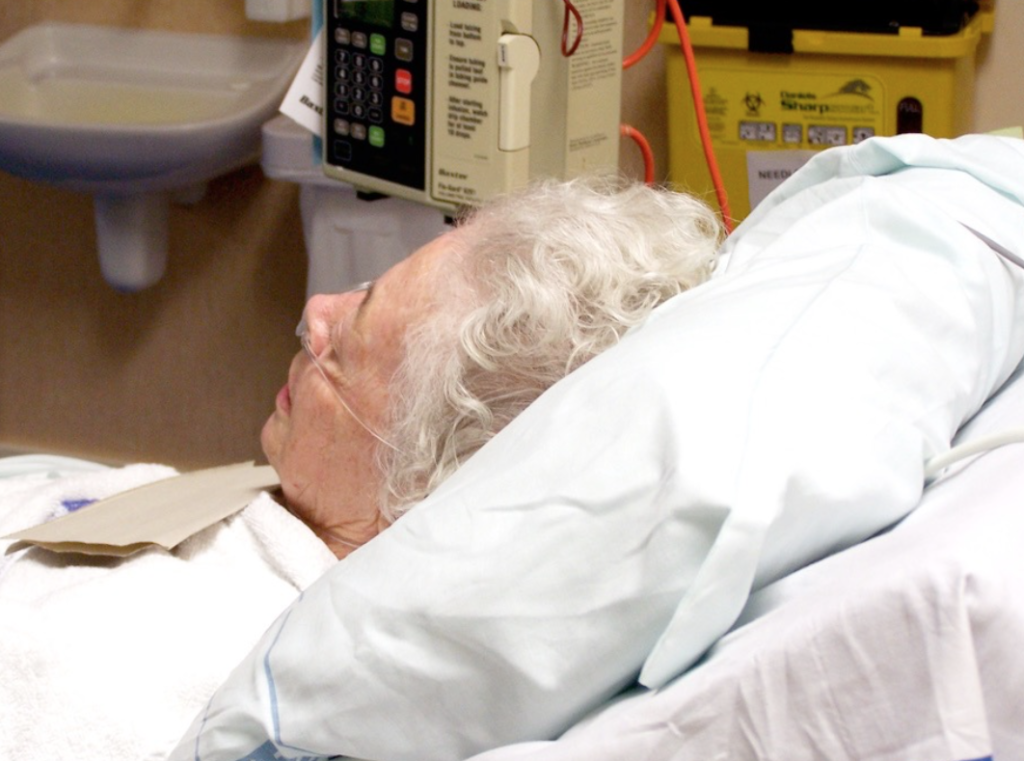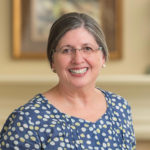
D. Joy Riley, M.D., M.A.
Executive Director

30 November 2022
Her son asked if I could be there by 9:00 A.M., when the hospitalist would likely make rounds. I agreed, and made the three-hour journey on a Monday in November. My friend was the patient, and I, a visitor. What I saw in the ensuing hours made me beyond sad.
A nurse came in to “take her vitals.” That meant she wheeled in a cart with various measuring components: a wristband to measure blood pressure, a probe to take the patient’s temperature, and a pulse oximeter to measure blood oxygen content. The patient was wearing a heart monitor, so the pulse rate was readily accessible. The only “vital” to be taken manually was to count her respirations. An assistant did that. While the temperature was taken, the nurse was not watching the insertion of the probe, but the machine to see the temperature register. The patient was uncomfortable, but the nurse did not notice. I suggested she “check the probe,” and she adjusted it.
Before the nurse left, someone from housekeeping came into the room. She sprayed some fluid on the sink near the entry to the room, wiped it, and then emptied the trash can. She gave a quick look into the bathroom, but there was no time spent cleaning that room.
About that time, someone from dietary came to obtain an order for lunch and dinner. The offerings were meager: liquids, including Ensure, and perhaps some crackers. Even so, the taking of these unappetizing orders took several minutes – much longer than the housekeeping visit.
Finally the doctor arrived. He asked how the patient was feeling, and did a brief exam. The patient said that her feet and legs were swelling. The doctor replied that the patient’s liver was not producing enough protein, so the legs and feet were understandably swollen.
Later in the day, a nurse practitioner from the oncology practice came to see the patient. When the patient asked about what was to be done, she was told, “We are VERY WORRIED that we do not have a therapy that would help.” This was done three times – with the health care professional’s eyes closed each time. She would then open her eyes and offer a one-time trial of a reduced-dose of a cytotoxic chemotherapy, and tell the patient it was up to her to decide if she wanted to try it or not.
The day was punctuated by more visits by professionals for “vitals,” the giving of pain meds, and the transfusion of blood. None of these brightened the face of my friend, although the medications did relieve some of her pain, and the blood transfusions gave her some temporary increase of energy.
What brightened the face of my friend was to spend time with her family members and friends. Thankfully, these spent large amounts of time at the bedside. She was rarely alone. I re-learned the importance of shared meals. One afternoon, after her tray was delivered, she asked me to go to the cafeteria, get lunch for myself, and bring it back to her room. I did, and we ate a meal together as we have often done over the years. This woman knew what good medicine was – and wasn’t.
Allen Verhey talks about “medicalized” dying in his book, The Christian Art of Dying. It is the particular way of seeing death as “the great enemy to be defeated by the greater powers of science and medicine” (p. 3). Moreover, it “usually happens in a hospital, in a sterile environment, and in the company of technology and the medical experts who know how to use it. Little wonder, then, that death has been reduced to a medical event and that the art of dying well has largely been lost.”
Verhey continues,
In diagnosis, medicine fixes its objective gaze on the body and sees the body as an object. In therapy, medicine treats the body as a manipulable object. The “person” sometimes gets lost – and so indeed does the body. . .
Death threatens to alienate us from our own flesh, from our communities, and from God. (pp. 16-17)
Thankfully for my friend, the care plan changed. Somehow, it was finally agreed that a cytotoxic chemotherapy for her aggressive cancer was not the answer. Her family saw fit to transfer her to a skilled nursing facility where she had round-the-clock nursing available, and to enter her into hospice. Although her time was a short few weeks, she was in a more comfortable environment, and family and friends were with her constantly. We all held her hands a lot, and traded stories from our memory banks. Those were good and important times. She did not die alone, but was surrounded by five persons, known to and loved by her and one another.
What ought we to learn from this? Something is wrong in medicine when people are treated like machines or inanimate objects. We need to relearn what it means to be human, and treat each other that way. Here are some suggestions:
- When persons are patients in a hospital or other care setting, it is important to have a family member or friend present as much as possible. My friend’s daughter underscored the need for this to me. The nursing and support staff are not able to do all the work that needs to be done. We could massage her legs when they were uncomfortable, obtain ice water from the machines down the hall, and help her to and from the recliner chair at her bedside or the bathroom as needed.
- Eating is a social activity as well as a vital part of life. My friend reminded me of that by asking me to get my meal and join her. I did draw the line at drinking some of her calorically-enhanced Ensure, though, and she was quite surprised.
- Recognize that patients near the end of life are in what some have called “a thin space between earth and heaven, holy ground.” Giving them time and space to contemplate their end is a necessary act. Having a constant parade of people in to “check their boxes” is a distraction. Entering a patient’s room is a privilege – not a right conferred on all who wish to come that way.
- Address the elephant in the room. In this case, it was the fact that there was no good treatment for my friend, and the medical staff danced around that fact for days. Every day, my friend was told that it was her decision as to whether or not she would try a reduced-dose cytotoxic therapy which might give her some more time. After about two weeks, the patient’s daughter had a meeting with three of the nursing staff, and a plan was developed, whereby the patient would be transferred to a skilled nursing facility, and hospice involved.
- Intellectual honesty is a must: “Sadly, we have no therapy to address your disease, so we will do our best to treat your pain and other symptoms, and keep you comfortable” is one example of clear communication. Her oncologist did say that one day in my hearing, but it was quickly followed by, “If you want to try the chemotherapy, you can do that. It is your choice.”
- Both my friend and her daughter separately communicated to me that their impression of the hospital staff was that the physicians and nurses just wanted my friend to leave in disgust or die.
- The various medical professionals need to relate to the patient as a person before them, not as a “data” set. Perhaps we can give copies of The Physician’s Covenant or The Way of Medicine to health care professionals whom we know.
- The hospital staff, such as the cleaning or dietary staff, need to do their jobs with some thought. The dietary department representative did not really listen to my friend. She would read aloud the choices, and not pay attention to what the patient was saying. Near the end of my friend’s hospital stay, there were eight containers of strawberry Ensure on her bedside table. Finally, someone came to evaluate the situation, and remarked about that. Then she told me to go to Wal-Mart to pick up a different flavor of Ensure.
The same young woman “cleaned” my friend’s room every day. I never saw anyone mop the room. The floor was so sticky near the window side of the room that my shoes stuck to it. I cleaned it with soap on a wet white towel. Days later, that blackened towel was still in the dirty linens bin, awaiting emptying.
We can, we must, do better!
Resources
Curlin, Farr A., and Christopher Tollefsen. The Way of Medicine: Ethics and the Healing Profession. Notre Dame, IN: University of Notre Dame, 2021.
Dugdale, Lydia S., and Michael W. Dugger. The Lost Art of Dying: Reviving Forgotten Wisdom. New York, NY: HarperOne, an imprint of HarperCollins Publishers, 2021.
May, William F. The Physician’s Covenant: Images of the Healer in Medical Ethics. Louisville, KY: Westminster John Knox Press, 2002.
Verhey, Allen. The Christian Art of Dying: Learning from Jesus. Grand Rapids, MI, MI: William B. Eerdmans Pub., 2011.
